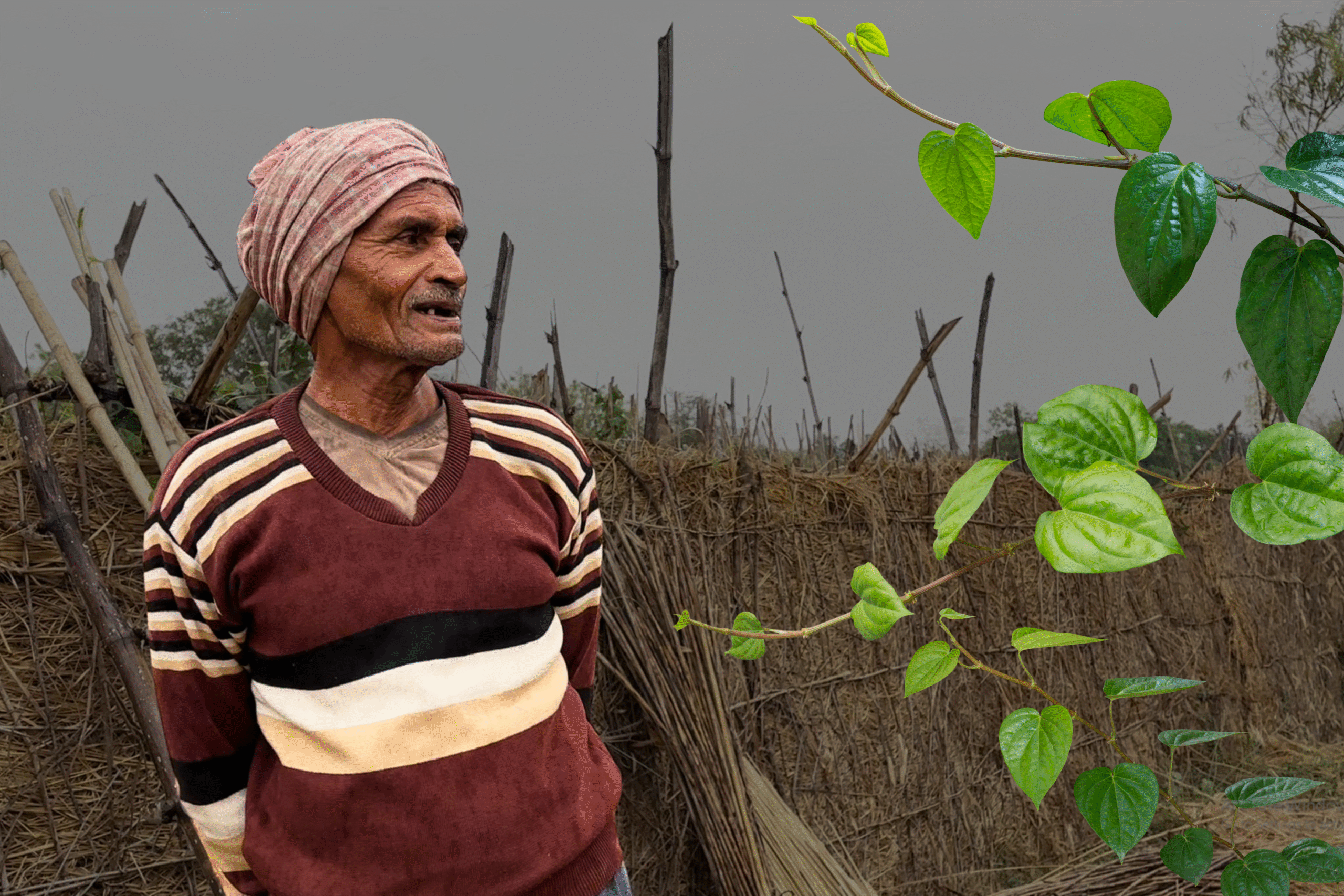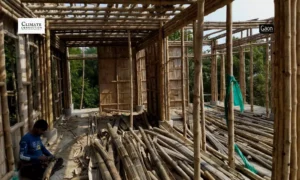Katia (Sitapur), Uttar Pradesh
Uday Raj Chauhan used to cultivate wheat and paddy on his five acres of land. A couple of years back, he switched over to mentha (menthol crop) farming and has been earning profits ever since.
“I have been cultivating mentha on my five acres of land. I easily earn almost Rs 90,000 from an acre while the input cost per acre is Rs 25,000. Before cultivating mentha, I used to grow wheat and paddy. Earning even a profit of Rs 50,000 was tough from such food crops,” the 35-year-old farmer from Sitapur’s Paragi Purva village, told Gaon Connection.
Chauhan had come to the Sitapur district headquarters, about 88 kilometres from the state capital Lucknow, to attend an interactive workshop aimed at counselling farmers to increase their incomes by cultivating aromatic and medicinal crops.
The workshop, organised earlier this month on July 5, was part of the government’s efforts to increase farmers’ incomes. It was jointly organised by the scientists from the CSIR-CIMAP [Council of Scientific and Industrial Research-Central Institute of Medicinal and Aromatic Plants] at the Katia-based krishi vigyan kendra [farm science centre]. As many as 50 farmers participated in the event.
“The primary objective of this interactive workshop is to inform farmers about ways in which they can utilise the properties of medicinal and aromatic plants to reduce their losses to a minimal extent. For farmers looking for ways to diversify their yield, such crops can be a prudent alternative,” Saudaan Singh, Senior Scientist at Lucknow-based CIMAP, who was also the chief guest at the event, told Gaon Connection while participating in the workshop.
Medicinal and aromatic plants are botanical raw materials, also known as herbal drugs that are mostly utilised for therapeutic, aromatic and/ or culinary purposes as components of cosmetics, health, medicinal products and other natural health products.
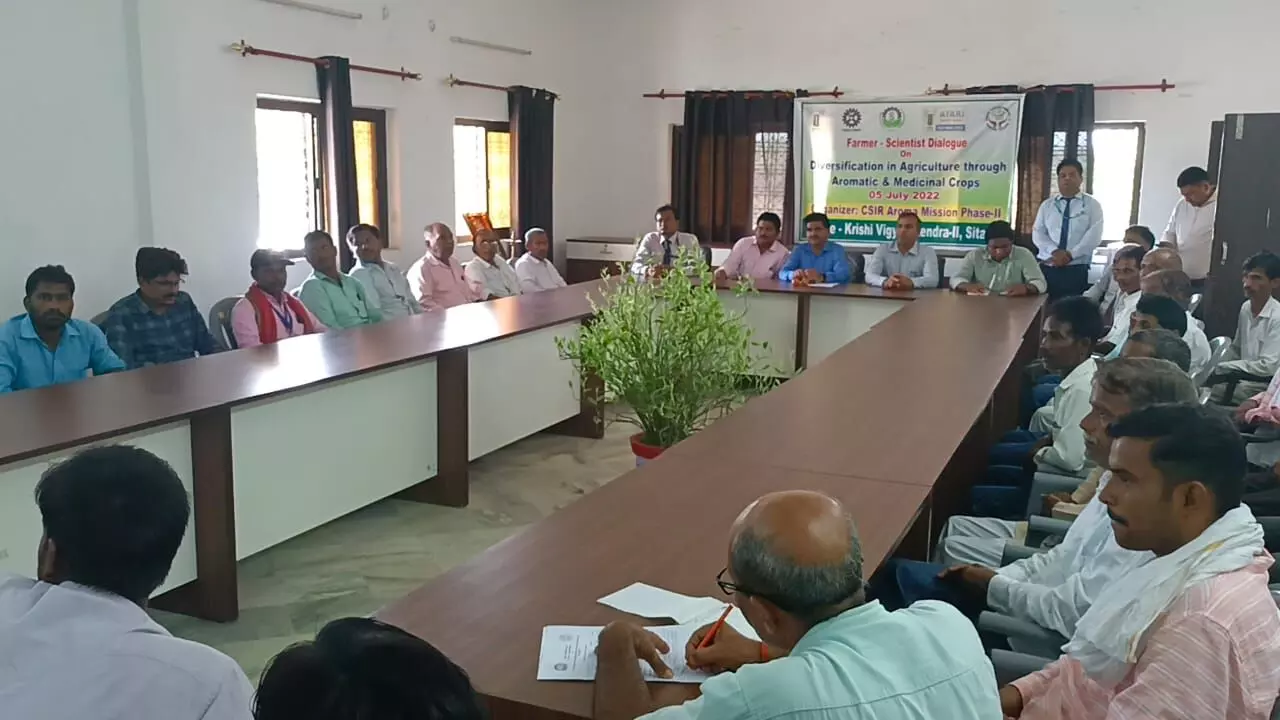
The workshop, organised earlier this month on July 5, was part of the government’s efforts to increase farmers’ incomes.
During the workshop, apart from mentha, the scientists also provided information on other aromatic crops including lemon grass, vetiver [khas], tulsi [holy basil], and palmarose [rosha ghaas].
Rakesh Kumar, scientist at the farm science centre in Sitapur, provided the much needed information for farmers interested in cultivating aromatic plants.
Lemon grass
Depending upon the soil and the topography of the Sitapur district, many aromatic plants like lemon grass can be cultivated here, said Kumar. “In lemon grass, there are five main varieties — Krishna, Sim-Shikhar, Sim-Swarna, Chirharit and Kaveri. It is a crop that can be harvested multiple times after sowing,” the scientist added.
A single time investment for cultivating lemongrass on an hectare of land is Rs 80,000 if irrigation is available and the return on investment is upto Rs 200,000. If the irrigation is not available then the input costs hover around Rs 45,000 and the profit is about Rs 120,000.
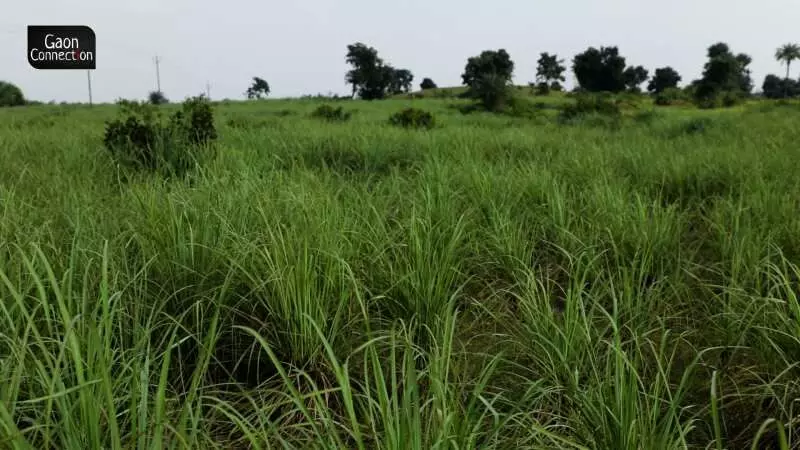
“What is special about this crop is that it can also be cultivated on lands that are not irrigated. Hence, it is a better alternative than staple crops like paddy which is a water-guzzling crop,” he explained.
The scientist further informed that a hectare of lemon grass produces 200 to 250 litres of oil on irrigated land and it continues to reap profits for almost five years. On unirrigated land, it produces 100 litres to 125 litres of oil.
Palmarosa
Palmarosa or rosha ghaas has four main varieties — P.R.C-1, Trishna, Tripta, and CIMAP Harsh. Like lemon grass, the palmarosa also reaps profits for many years after being planted.
Similar to lemongrass, palmarosa can also be cultivated without irrigation but the harvests are better when irrigation is available.
“In irrigated land, the input cost is almost Rs 50,000 while the yearly profits can easilyamount to Rs 150,000. If irrigation is not available, the investment needs to be almost Rs 30,000 and the profits range upto Rs 80,000,” Kumar, the scientist, said.
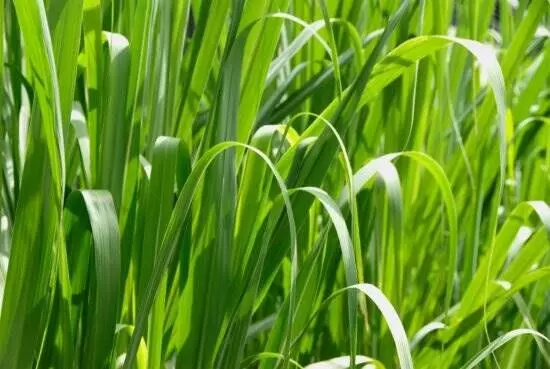
“The farmers need to ensure that there is no stagnant water in the field where palmarosais being cultivated as it destroys the crop. Both leaves and flowers of palmarosa contain the aromatic oil which is in high demand across the world,” he said.
Tulsi
Tulsi or the holy basil has four main varieties — Sim-Saumya, Sim Jyoti, Sim Sharda, and Sim Suvash.
“The tulsi crop is harvested thrice in a year and its leaves are used for manufacturing pharmaceuticals, soaps, and is also used for aromatherapy. On an hectare of land, it requires an investment of Rs 40,000 while the profits range upto Rs 100,000 in a year,” Kumar told farmers at the workshop.
In terms of oil production, a hectare of tulsi crop produces up to 120 kilograms of oil.
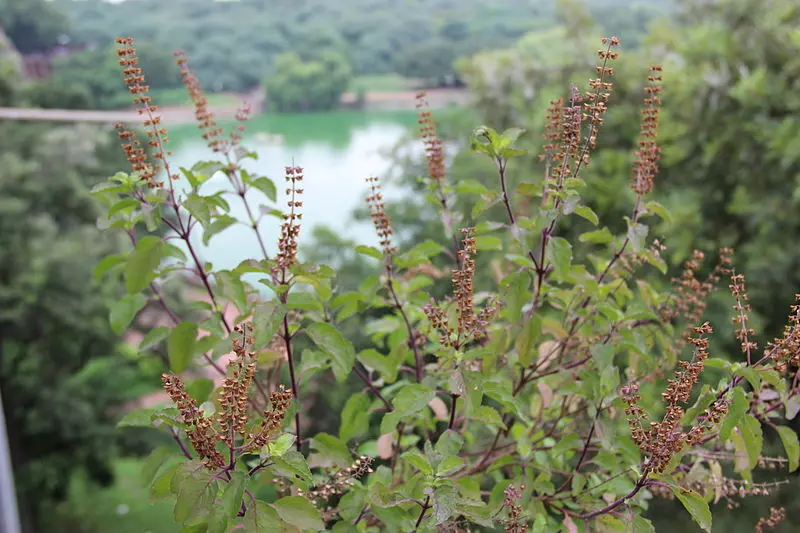
Khas
Khas also known as Vetiver is used for its roots which contain aromatic oil. The oil is used for manufacturing products like soap, perfumes, room sprays, refreshing drinks and for blending it with other fragrant oils like rose oil, sandal oil, lavender oil etc.
Kumar told farmers at the workshop that it takes almost 12 months for the roots of khas to mature enough to have essential oil.
“Talking about expenses, per hectare cost of cultivating khas is almost Rs 120,000 to Rs 150,000 but the profits are easily double the input cost,” Kumar said.
Benefits of growing medicinal and aromatic crops
Daya Shankar Srivastava, scientist at the Katia-based farm science centre which was the venue of the workshop, told Gaon Connection that even if farmers have reservations about switching to a completely new cash crop, they can still grow such crops besides their mainstay cultivation.
“One of the biggest advantages of cultivating these medicinal and aromatic crops along with crops like wheat and paddy is that it significantly reduces the expenses on insecticides. The insects that damage the wheat and rice crops do not hover on a field that has aromatic plants on it,” Srivastava said.
Aromatic and medicinal plants like mentha have multiple benefits for the farmers and involve lesser risks and are more rewarding.
“These plants, because of their strong aroma, deter grazing animals who pose a great risk to the farmers. Also, the profit margins are way higher than that of food crops like wheat and paddy. The government is constantly working to double farmers’ incomes but if cultivators take the initiative to grow crops like mentha, their incomes can rise by almost three to four times,” Kumar said.
![During the workshop, apart from mentha, the scientists also provided information on other aromatic crops including lemon grass, vetiver [khas], tulsi [holy basil], and palmarose [rosha ghaas] During the workshop, apart from mentha, the scientists also provided information on other aromatic crops including lemon grass, vetiver [khas], tulsi [holy basil], and palmarose [rosha ghaas]](https://www.gaonconnection.com/wp-content/uploads/2024/05/360691-mentha.webp)
During the workshop, apart from mentha, the scientists also provided information on other aromatic crops including lemon grass, vetiver [khas], tulsi [holy basil], and palmarose [rosha ghaas]
The scientist also highlighted that aromatic crops like mentha also have a longer shelf life than staple crops and are in great demand across the world with India being its largest producer.
“Crop diversification also helps in ensuring the longevity of the soil fertility as it checks monoculture [growth of same crops on land] and doesn’t exhaust the same set of nutrients from the soil over a period of time,” Srivastava said.
‘Sure shot method to raise farmers’ incomes’
Meanwhile, Rakesh Kumar, scientist at the farm science centre added that apart from mentha, crops like patchouli, geranium, jangali genda [southern cone marigold], rose, ashwagandha [Indian ginseng], kaalmegh [Green chiretta], aloe vera, and rosemary, all are in high demand in the market and the climate of Sitapur favours their production.
“These medicinal and aromatic crops can easily raise farmers’ incomes multifold. As farmers will have some difficulty in developing an expertise in the cultivation of these crops in the beginning, scientists like us are always there to counsel them and help them cope with the technical challenges,” he said.
Satyendra Kumar Shukla, one of the farmers who participated in the workshop raised the question of how to ascertain the quality of the produce.
“I asked the scientists in the samaaroh (event) about it. They assured me that farmers like me can bring a sample of their produce to this krishi vigyan kendra and get it tested for their quality following which a quality certificate shall be issued which would nullify all disputes and disagreements with the traders,” Shukla said happily.
This workshop in Sitapur was part of CSIR’s much larger ‘Aroma Mission’ which is popularly known as purple revolution owing to its origin in Jammu and Kashmir in 2016 in which farmers successfully switched to cultivating lavender flowers which helped them in increasing their incomes.
One of the primary aims of the aroma mission is to enable Indian farmers and the domestic aroma industry at large to become global leaders in the production and export of some major essential oils on the lines of menthol production.







